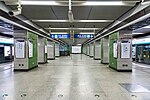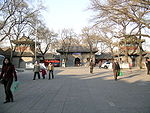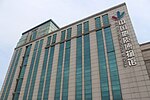Church of the Saviour, Beijing
1703 establishments in ChinaCathedrals in BeijingChurches in BeijingGothic Revival church buildings in ChinaJesuit churches in China ... and 3 more
Major National Historical and Cultural Sites in BeijingRoman Catholic cathedrals in ChinaRoman Catholic churches in Beijing

The Church of the Saviour (Chinese: 救世主堂), also known as the Xishiku Church (simplified Chinese: 西什库天主堂; traditional Chinese: 西什庫天主堂) or Beitang (Chinese: 北堂; lit. 'the North Church'), is a historic Roman Catholic church in the Xicheng District, Beijing, China.
Excerpt from the Wikipedia article Church of the Saviour, Beijing (License: CC BY-SA 3.0, Authors, Images).Church of the Saviour, Beijing
Xishiku Street, Xicheng District Shichahai (首都功能核心区)
Geographical coordinates (GPS) Address External links Nearby Places Show on map
Geographical coordinates (GPS)
| Latitude | Longitude |
|---|---|
| N 39.923888888889 ° | E 116.3725 ° |
Address
西什库天主堂
Xishiku Street
100032 Xicheng District, Shichahai (首都功能核心区)
Beijing, China
Open on Google Maps











